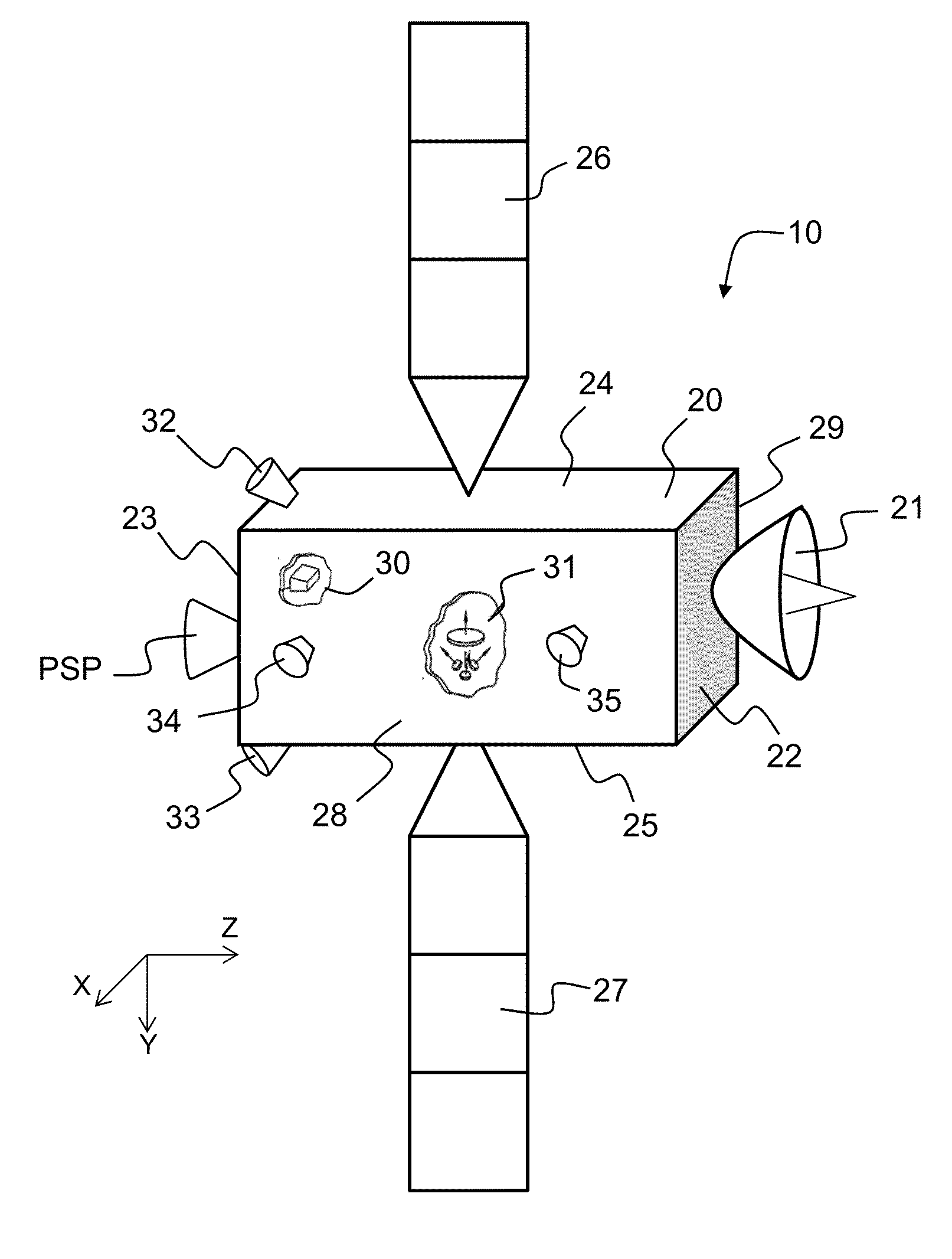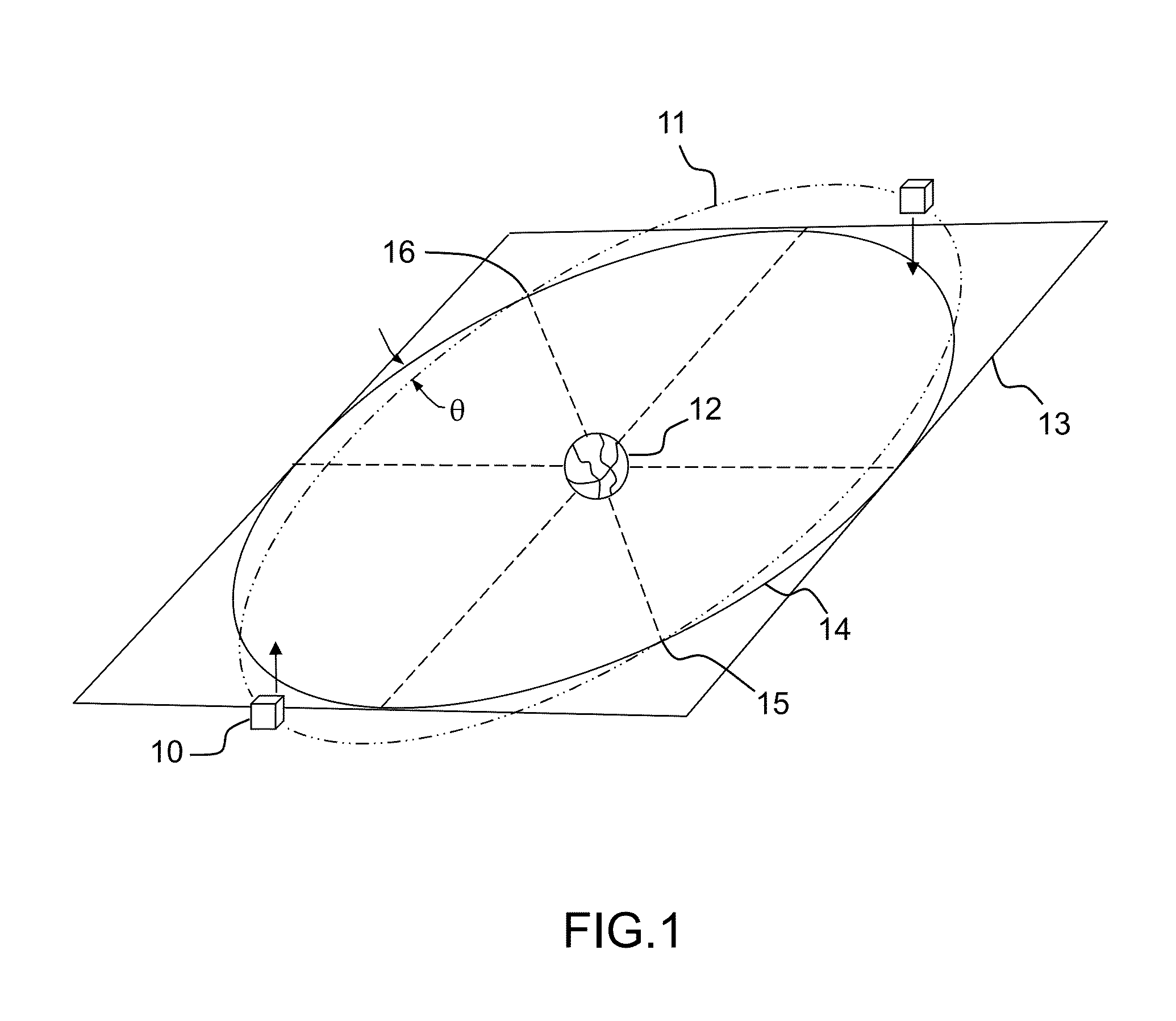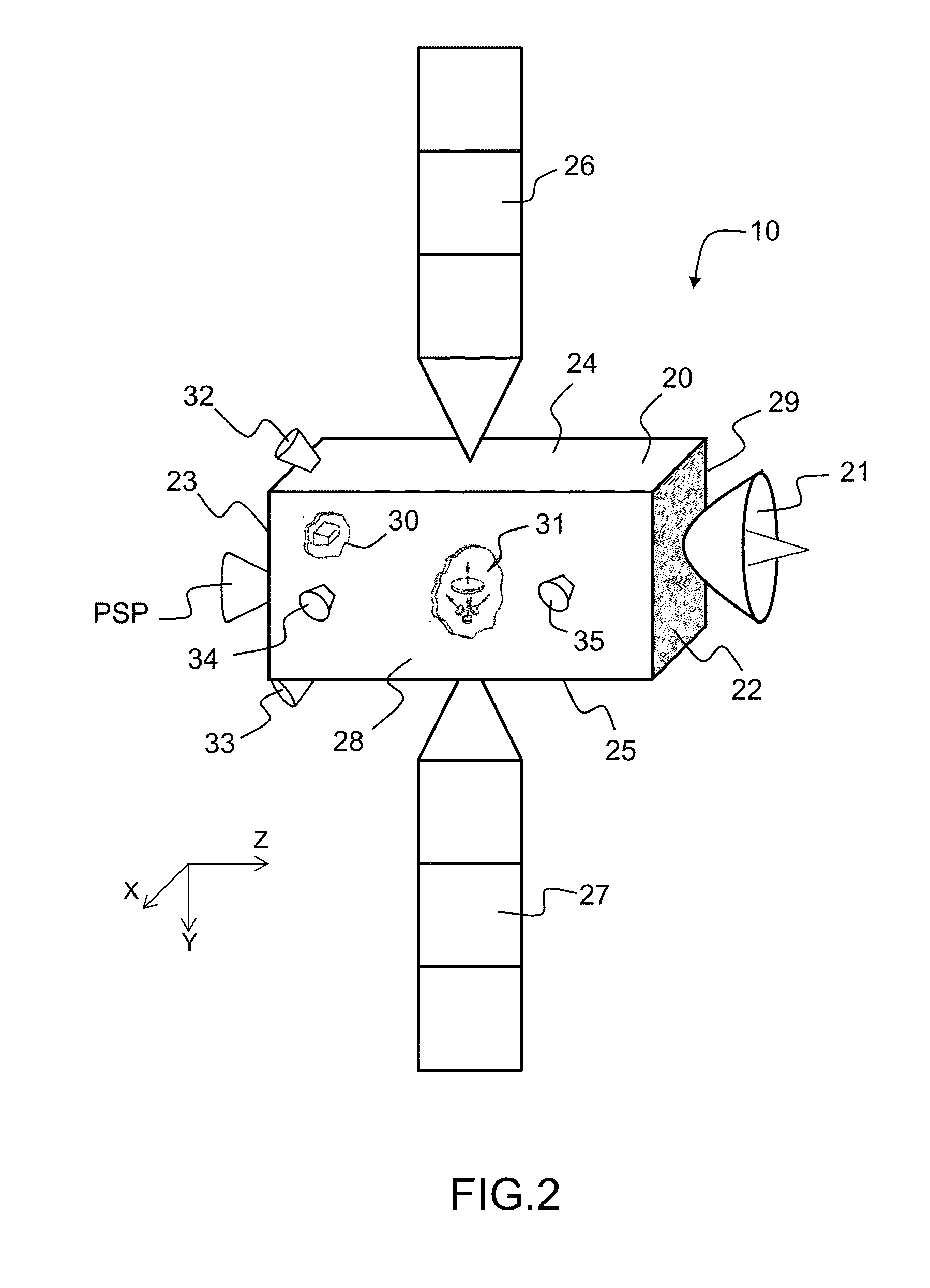Propulsion system in two modules for satellite orbit control and attitude control
a propulsion system and satellite technology, applied in the field of satellite orbit control and attitude control systems, can solve the problems of high initial weight and the effectiveness of thrusters, or their capacity to generate, and achieve the disadvantage of different thrusters and fuel, high cost and high weigh
- Summary
- Abstract
- Description
- Claims
- Application Information
AI Technical Summary
Benefits of technology
Problems solved by technology
Method used
Image
Examples
first embodiment
[0062]FIGS. 4a, 4b and 4c represent the propulsion system respectively in storage position, in orbit transfer position and in operational position. As previously described, a satellite 10 in orbit 11 is stabilized on three axes of a reference trihedron linked to the satellite by means of an attitude control system. The reference trihedron comprises an axis Z oriented towards the Earth, an axis Y at right angles to the orbit and oriented in the direction opposite to the kinetic moment of the orbital rotation, and an axis X forming, with the axes Y and Z, a direct orthogonal reference frame. The axis X is oriented in the direction of the speed of the satellite in orbit 11 around the Earth 12. The satellite 10 comprises a parallelepipedal structure 20 with two faces 22 and 23, called Earth face and anti-Earth face, that are at right angles to the axis Z and oriented respectively towards the Earth and towards a direction opposite the Earth, and two opposite adjacent faces 24 and 25, cal...
second embodiment
[0080]In this second embodiment, each of the two thrusters, respectively 54a and 55a, comprises a redundant thruster, respectively 66a and 67a, arranged on the plate in proximity to said main thruster, respectively 54a and 55a, and in such a way that its thrust axis is contained in a plane containing the thrust axes of the two main thrusters 54a and 55a.
[0081]Provision is made for the possibility of not having them arranged strictly parallel so as to best accommodate the interactions of the jet of the thrusters with the other components of the satellite—notably its appendages—or any other constraint of configuration or of optimization of the management of the kinetic moment via the torques generated.
[0082]In the case of a satellite with circular orbit referenced by means of the reference trihedron (X, Y, Z) represented in the figures, this means that the thrust axes of the four thrusters (two main thrusters and two redundant thrusters) are parallel to one another and at right angle...
third embodiment
[0085]Thus, the propulsion system according to this third embodiment comprises, for each of the two propulsion modules, between the offset arm 52a and the plate 53a of said module 50a, a second motorized rotation link 70a about an axis T at right angles to both the axis V and the thrust axes of the two thrusters 54a and 55a of said propulsion module 50a.
[0086]FIG. 6a represents the propulsion module in operational position. The plane containing the thrust axes of the thrusters passes through the centre of mass CM of the satellite. The second motorized link 70a is in a centered position; the thrust axes of the thrusters being aligned on the axis Z. This is also the position of the propulsion module represented in FIG. 6b. In this view, the propulsion module is presented in the plane containing the thrust axes of the thrusters. This plane is at right angles to the axis T of rotation of the second motorized link 70a, it contains the axis R1a of the first motorized link 51a. In this ce...
PUM
 Login to View More
Login to View More Abstract
Description
Claims
Application Information
 Login to View More
Login to View More - R&D
- Intellectual Property
- Life Sciences
- Materials
- Tech Scout
- Unparalleled Data Quality
- Higher Quality Content
- 60% Fewer Hallucinations
Browse by: Latest US Patents, China's latest patents, Technical Efficacy Thesaurus, Application Domain, Technology Topic, Popular Technical Reports.
© 2025 PatSnap. All rights reserved.Legal|Privacy policy|Modern Slavery Act Transparency Statement|Sitemap|About US| Contact US: help@patsnap.com



